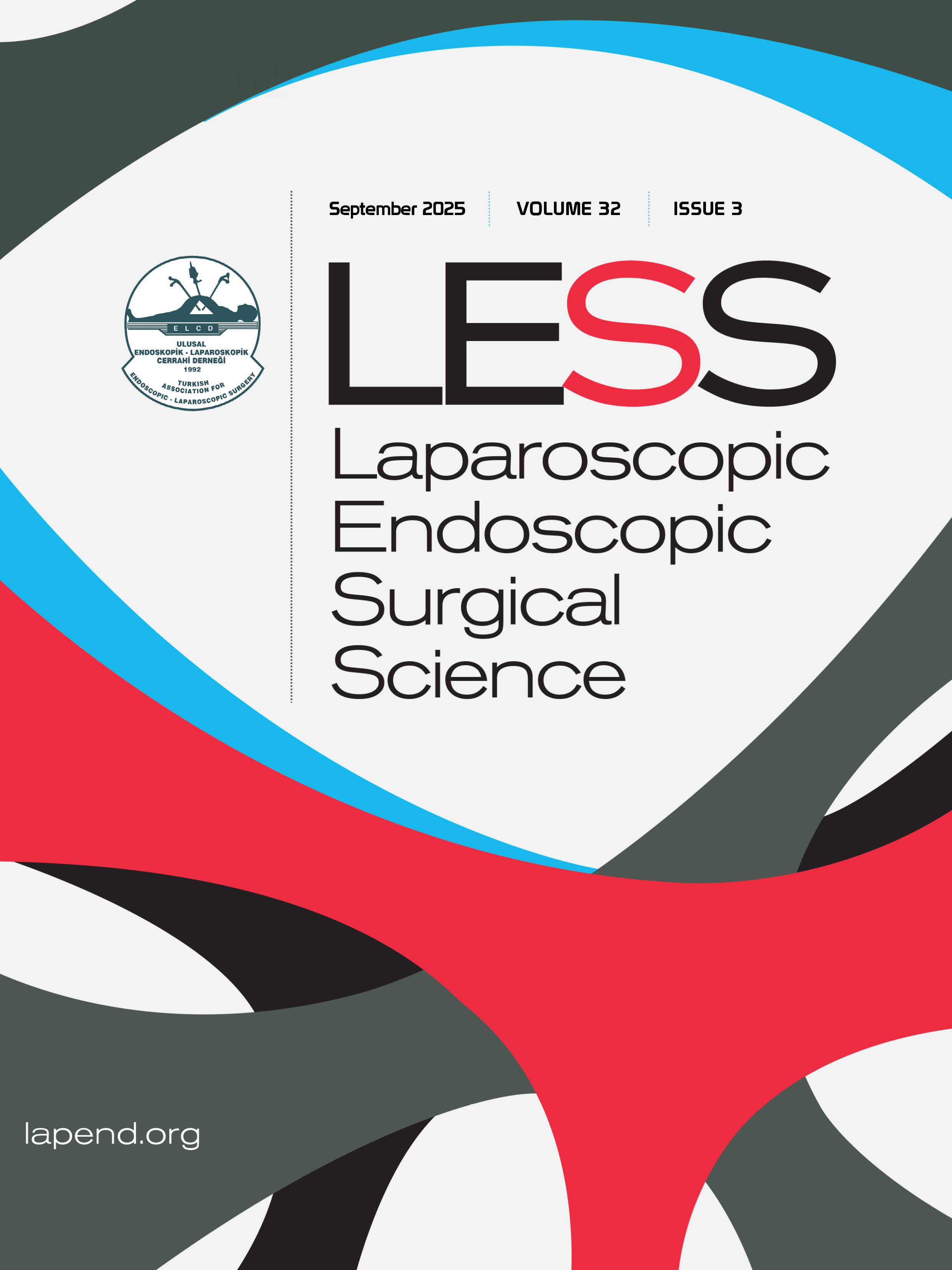Laparoscopic nephrectomy in renal pathologies: A single-center experience
Osman Barut1, Mehmet Kutlu Demirkol1, Yavuz Selim Okyay1, Faruk Küçükdurmaz2, Tayfun Şahinkanat1, Sefa Resim11Department of Urology, Sütçü İmam University, Kahramanmaraş, Turkey2Department of Urology, Sanko University, Gaziantep, Turkey
INTRODUCTION: This study aimed to retrospectively evaluate our first experience of laparoscopic nephrectomy for benign or malignant renal pathologies.
METHODS: This study evaluated the data of 32 patients who underwent laparoscopic simple nephrectomy and laparoscopic radical nephrectomy for benign and malign kidney pathologies in our clinic between March, 2016 and January, 2020. Demographic characteristics, operation time, blood loss, duration of hospital stay, pathology, and intraoperative and postoperative complications were examined.
RESULTS: Laparoscopic simple nephrectomy was performed in 17 (53.2%) and laparoscopic radical nephrectomy was performed in 15 (45.8%) of 32 patients. The median age was 57.8 (range, 1986) years. While 19 (59.4%) of the renal pathologies were on the right side, 13 (40.6%) were on the left side. The median operation time was 136 (range, 102262) min. Open surgery was started because the kidney was highly adherent to the surrounding tissues in two (6.3%) patients. In the postoperative period, one unit of blood was transfused to one (3.1%) patient. The median hospital stay was 4.1 (range, 38) days.
DISCUSSION AND CONCLUSION: Laparoscopic nephrectomy is a minimally invasive surgical method that can be performed safely and effectively. The most important advantages of laparoscopic nephrectomy over open surgery are better tolerance, shorter hospital stay, less need for postoperative pain relief, and better cosmetic results.
Manuscript Language: English















